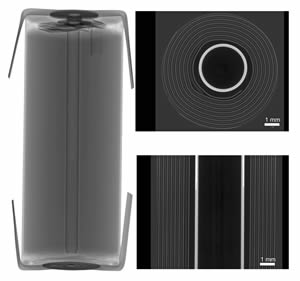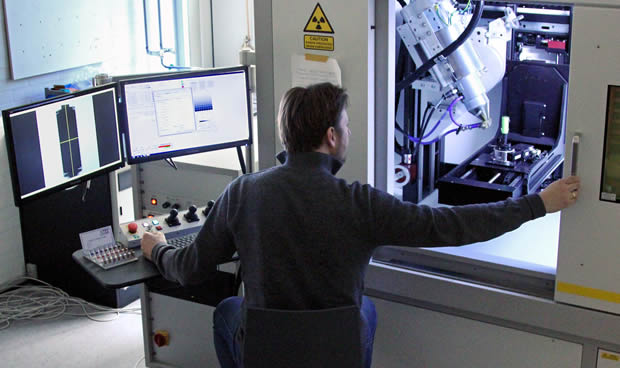Looking for a greener future with industrial CT
High flux CT (computed tomography) equipment has been purchased from Nikon Metrology, to investigate energy-related materials non-destructively, such as those found in batteries, electrolysis cells and fuel cells. DTU Energy, the department of energy conversion and storage that is part of the Technical University of Denmark, will use the high energy, 225kV, microfocus source to penetrate dense samples in the search for suitable materials to develop sustainable, green energy systems.
Non-renewables generate approximately 85% of the world’s energy today, but the issues with these finite resources have been known for a long time. Fossil fuels will one day be depleted but in the meantime, greenhouse gases such as carbon dioxide created by burning them are contributing to global warming.
In the search to find alternative resources to power the world, DTU Energy’s primary objective is to develop technologies for conversion and storage of energy derived from fluctuating sources such as wind and solar power generation. Wind power, for example, may be stored by converting the electricity produced into a fuel such as hydrogen or a hydrocarbon.
CT provides insight that cannot be obtained from 2D images. The department’s pre-existing imaging methods include electron microscopy (SEM, TEM), FIB-tomography, TOF-SIMS, XPS, neutron imaging, scanning probe microscopy and diffraction tomography. However, for material research, DTU required a CT system capable of delivering insight into the complex 3D structures characteristic of most energy conversion and storage devices.
The structure of batteries and electrochemical cells can be difficult to analyse from 2D images alone. For most characterisation methods, it is necessary to break or cut the materials to investigate the internal parts. With the CT facility, it is possible to investigate the devices in 3D non-destructively, giving information on internal surfaces and material structure such as the connectivity of pores, data that cannot be obtained from 2D images.
The XT H 225 ST is Nikon Metrology’s extended model, which allows samples up to 50kg and 300mm to be scanned. The extra size and weight capacity is what DTU Energy needed to inspect large, heavy samples such as solar, fuel and electrolysis cells. A 16-bit PerkinElmer 1620 flat panel allows high definition images to be obtained.
The CT scanner is also equipped with a multi-metal target that generates specific X-ray spectra. Besides the standard tungsten target, the operator can select three other materials - silver, molybdenum and copper - enabling X-ray emissions at lower energies to improve the analysis of some materials.
The wide scope of options with the Nikon Metrology system makes it a flexible tool for use across quality laboratories, production facilities and research departments, which is useful as other departments at the university will use the equipment, including DTU Compute, DTU Mechanics and DTU Physics.
The system has so far provided information on pore fraction, pore shape and connectivity in cells as well as on interface areas between materials and particle sizes. It has also been used to investigate the internal 3D structure of batteries and track possible changes during and after aging cycles.
The XT H 225 ST comes with a motorised FID (Focal spot to Imager Distance), meaning that the detector can be moved closer to the source. A shorter FID means that the X-ray flux is increased, reducing imaging exposure and scan time. DTU Energy has made use of the high flux of the ST model to facilitate faster scans for in-situ measurements.
Søren Bredmose Simonsen at DTU Energy said: “The motivation for buying the Nikon system was the 225kV microsource with a minimum spot size of 3µm, which is able to scan dense materials containing heavy elements and larger samples such as a batteries, solar cells and fuel/electrolysis cells.”



